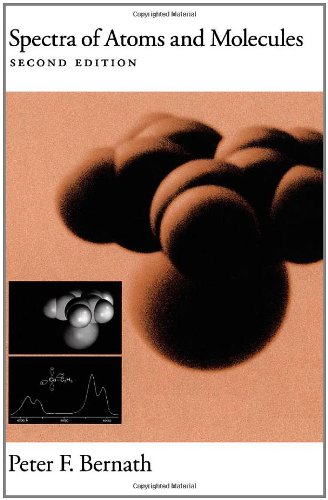Spectra of Atoms and Molecules epub
Par stallings rhonda le mercredi, juillet 27 2016, 20:52 - Lien permanent
Spectra of Atoms and Molecules by Peter F. Bernath


Spectra of Atoms and Molecules Peter F. Bernath ebook
Format: pdf
Publisher: Oxford University Press
Page: 405
ISBN: 0195075986, 9780195075984
Up-to-date overview of principal directions in this rapidly expanding field of dielectric spectroscopy and its applications to science and technology given by leading experts. Xenon Light Source for Spectroscopy. In spectroscopy, typically the interesting part are the electronic states of atoms and molecules. Here, such experiments could be used to learn more about gravity itself. It emphasizes the fundamental principles of spectroscopy with its primary goal. Spectroscopy is the study of energy state transitions that occur when electromagnetic energy interacts with a molecule, an atom, or a subatomic particle. We expect six fundamental vibrations (12 minus 6), and these have been assigned to the spectrum absorptions. The four-atom molecule of formaldehyde, the gas phase spectrum of which is shown below, provides an example of these terms. An atom or molecule that is reasonably isolated (such as in a gas at ordinary temperatures and pressures) will radiate a discrete set of frequencies called a line spectrum. Using this technique, the research team discovered that the rapid atomic dance on the surface is initiated by carbon monoxide molecules, which bind to individual palladium atoms. UV spectroscopy is used in the study of atoms, ions, molecules, and solids to identify their energy levels, transition probabilities, and other characteristics. Atomic, Molecular, Optical & Plasma Physics. Atoms and molecules book download. Single atoms or molecules emit light in a form called line spectra. These include the emission from dust – another contaminant in molecular clouds – and the gamma rays that are produced when cosmic ray particles interact with atomic and molecular hydrogen in the interstellar medium (ISM).